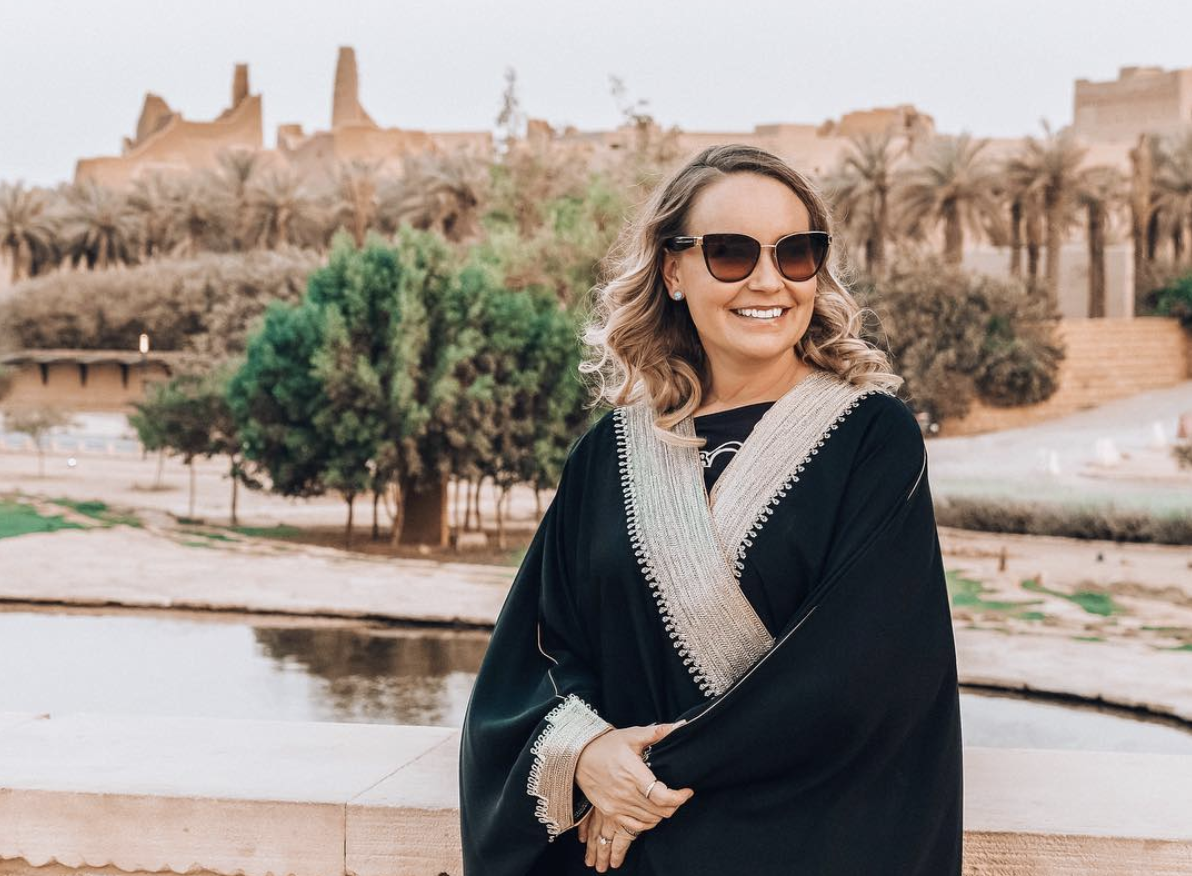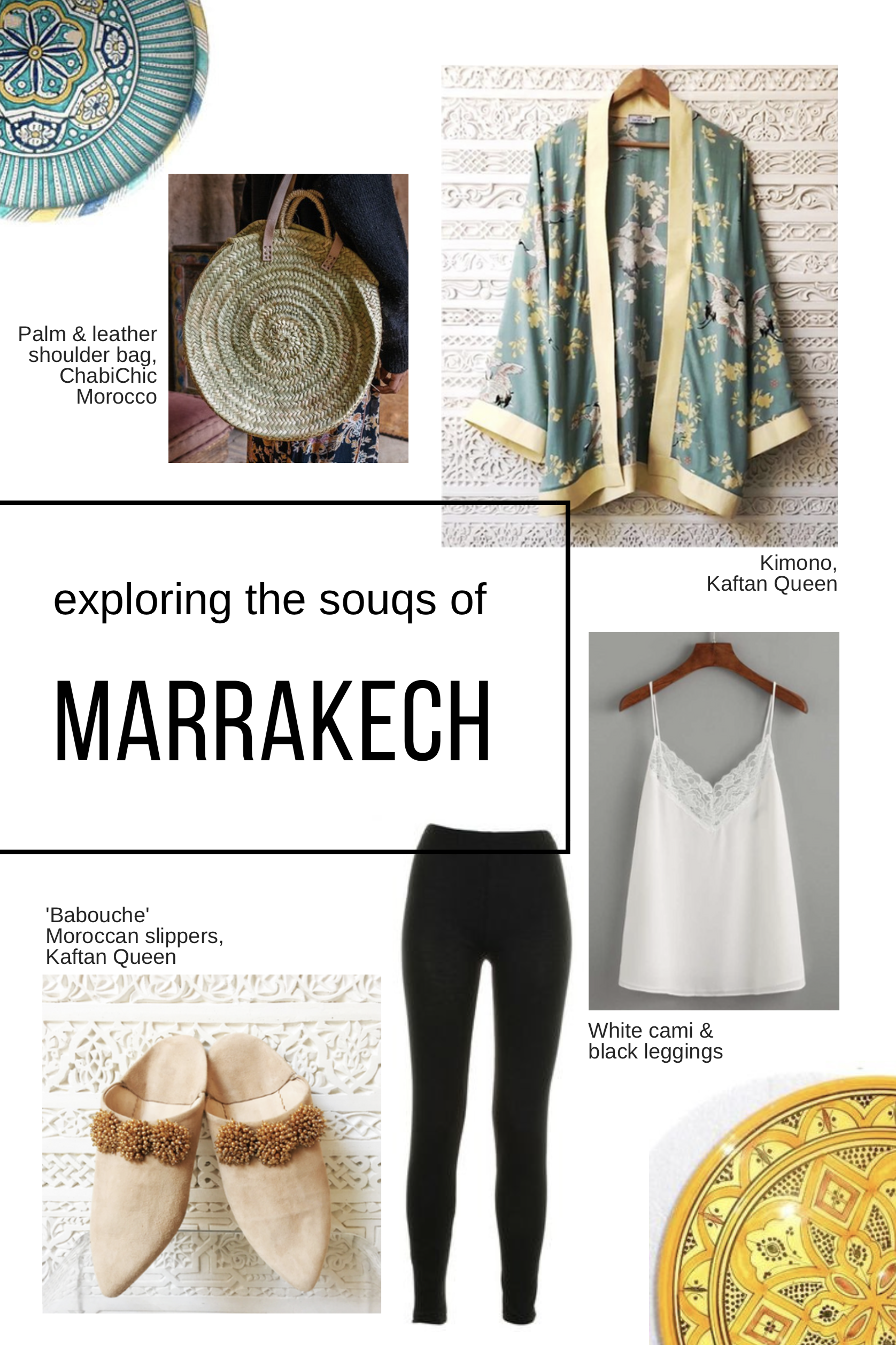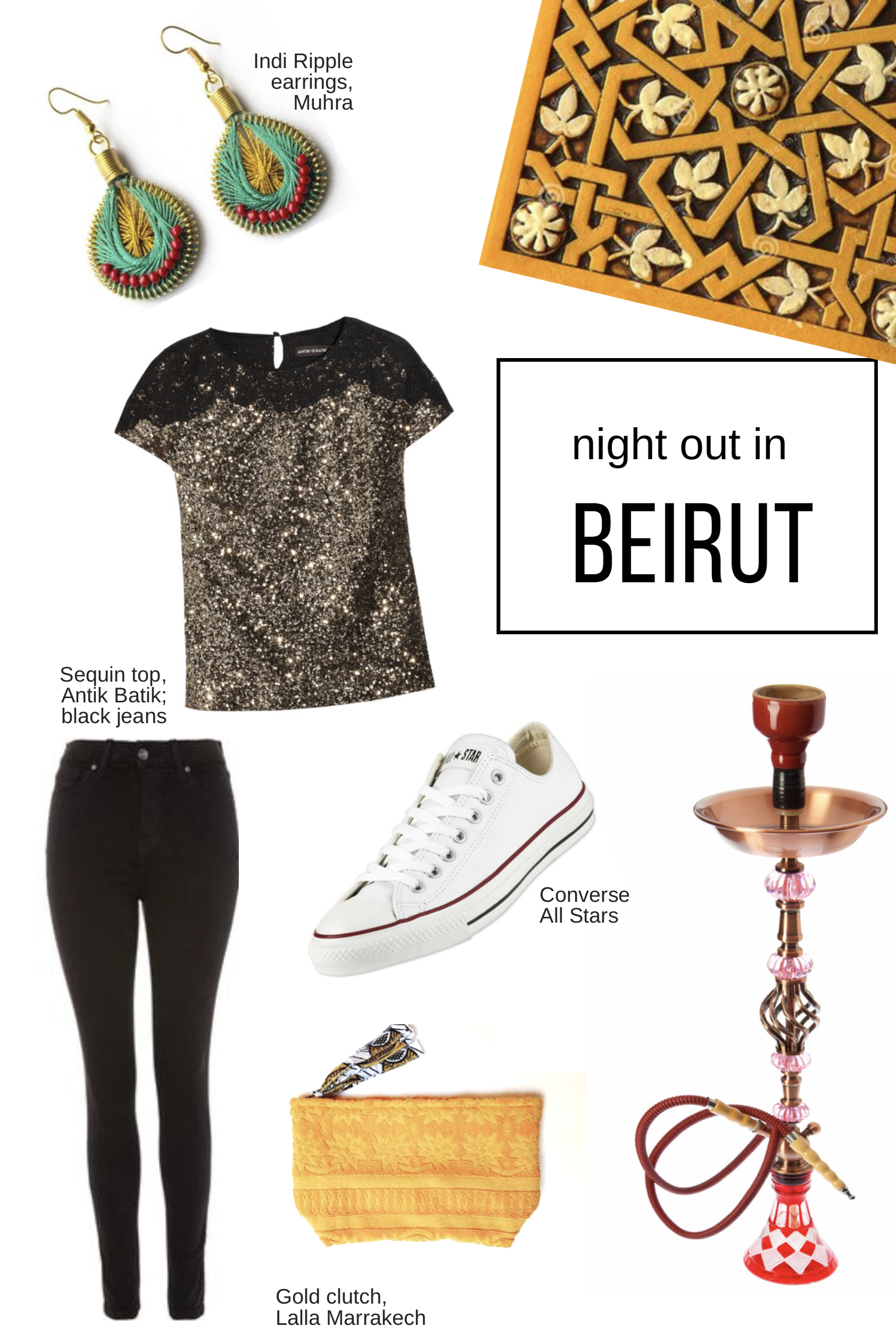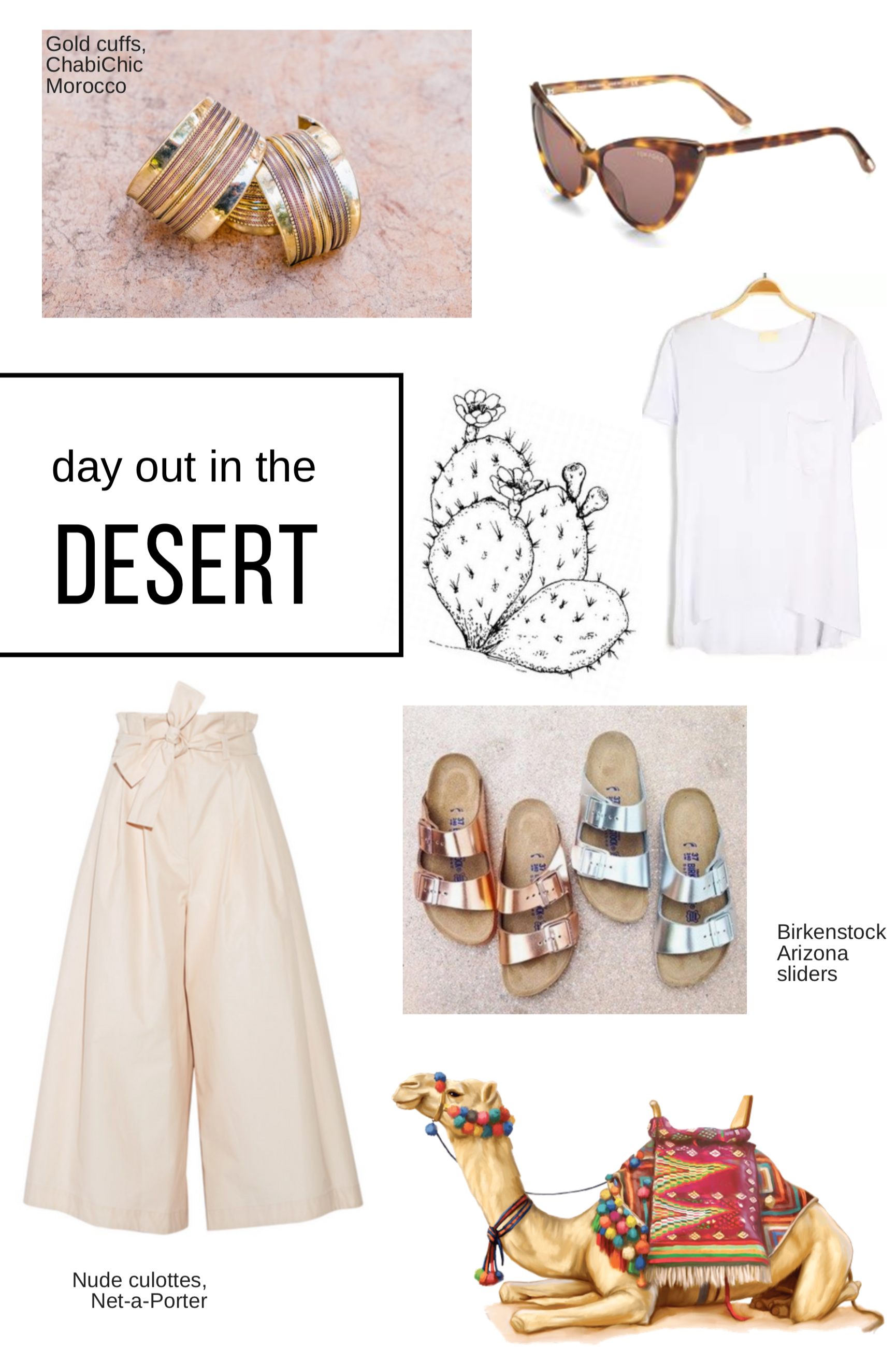As a western woman, it can be hard to know what to wear when travelling in the Middle East. After virtually every trip I’ve taken to the region I’ve been asked what I wear and whether I’ve needed to cover up. I get the impression that confusion over what’s appropriate and what’s not massively discourages western women from visiting the region, so I’ve put together this guide to help female travellers feel as comfortable and confident as they would anywhere else in the world.
One of the most predictable dilemmas when deciding what to pack is that the weather is often extremely hot, yet social conservatism can make dressing for the heat complicated as it’s often necessary or advisable to cover yourself up.
Another common dilemma is failing to realise that the Middle East and North Africa is made up of around 20 different countries spanning a huge, diverse geographical area, which means there are significant variations in the climate. Many assume that the whole of the region is hot and dry, while in reality, as well as the arid desert you’ll also find tropical monsoons and snow-covered mountains, depending on where and when you go.
 A western tourist in Petra Jordan
A western tourist in Petra Jordan
Helpful tips:
- Cool, light clothing is a must in the heat, as are layers (or you’ll freeze in the arctic air-conditioning!).
- Rural areas are generally more conservative than cities.
- When visiting religious sites you’ll likely need to be covered (including your head!), so carry a scarf or pashmina in your handbag just in case.
- Different rules and norms tend to apply in western hotels, resorts and beaches, so if you’re wearing something skimpy to that hotel brunch, make sure you’re decent on the way there and back. The same goes for most places serving alcohol.
- Be extra mindful and respectful during Ramadan.
- Everywhere is different! Always read up on the local culture before visiting a new place.
The Essentials – pack these and you’ll be ready for anything:
- Kimono
- Pashmina
- Maxi skirt or culottes
- Leggings
- Button up shirt
 Saudi-based blogger Laura Alho of Blue Abaya wears an abaya in a town near Riyadh
Saudi-based blogger Laura Alho of Blue Abaya wears an abaya in a town near Riyadh
One of the most confusing things about dressing in the region is that the climate and level of conservatism vary everywhere you go. Here’s a brief breakdown:
North Africa
Because much of North Africa has been subject to European influences over the years, there’s an assumption that the region is less conservative than parts of the Middle East, particularly the Gulf. Be careful, however, as this is not the case everywhere!
Yes, busy cities like Marrakech and Cairo do play host to hordes of tourists, so the locals are relatively accustomed to seeing women in western clothes. However, you may receive unwanted attention with too much skin on show, so I would recommend erring on the side of caution and throwing on a longer skirt or a kimono. You’ll feel much more comfortable!
If you’re heading off the beaten track – particularly in the countryside – then I would definitely dress a little more conservatively out of respect for local people, who may be less used to meeting western tourists. I’d always suggest opting for something that covers your shoulders and knees.
Coastal towns like Agadir and Sharm el-Sheikh are sometimes more touristy and relaxed than the big cities, but if you’re heading to the beach in a bikini, you should still wear a kaftan or cover-up en route.
The Levant
Most of the countries people visit in the ‘Levant’ – Lebanon, Jordan, Turkey, Israel and Palestine – vary from one area to another in conservatism (and climate!). For example, if you’re visiting Bedouin villages in southern Jordan, you’d likely wear something very different to what you’d wear on a beach in Tel Aviv!
Lebanon is home to a number of different religious groups that vary in their conservatism. In parts of Beirut, for example, you’ll likely see local people dressed up to the nines, skin on show, on their way out for drinks on a Friday or Saturday evening. Other parts of the country, like the Bekaa Valley and the northern city of Tripoli, are much more conservative.
Jordan is a lot more conservative than many people realise, particularly outside of Amman. You might be surprised to hear that the same goes for parts of Israel. If you’re travelling through the country you might find yourself partying on the beach in Tel Aviv one day, and passing through an ultra-Orthodox Jewish town the next, so be prepared.
Turkey is considered to be much more European than the rest of the region, however it is still a predominantly Muslim country and certain areas are fairly conservative, so be aware and be respectful. Having said that, if you’re visiting the more touristy areas like Istanbul and the Mediterranean and Aegean coasts, it’s fairly relaxed and you won’t look out of place in western clothes – but take a scarf if you’re planning on visiting religious sites like the famous Blue Mosque in Istanbul.
As always, the key is to read up on the local culture before visiting a new place, and pack a layer or two (either for modesty or for the cold!).
The Gulf
The countries of the Gulf are a little easier to predict. Generally speaking, they’re fairly conservative societies. Oh, and it’s HOT. We’re talking 50 degrees PLUS during the summer and mid-twenties during winter, so pack lots of light, airy clothes. However, I would also personally recommend a sweater for the cold desert nights (and the frrrreeeeezing khaleeji air-con!).
It gets a little more confusing in places like Dubai, which is absolutely FULL of westerners and is home to an endless supply of cocktail bars and beach parties. But while the UAE gives the impression of being fairly liberal and ‘anything goes’, western expats who live there know that it’s still respectful, sensible, and sometimes required to dress modestly when out and about. That might mean covering either your knees or your shoulders so you’re not showing too much skin.
Bahrain, Kuwait and Oman are also home to a number of western expats, but are widely considered more conservative than the likes of Dubai. The degree of conservatism among locals varies from one community to another, and even from family to family. So it’s best to hedge your bets and cover shoulders and knees so as not to risk making yourself or others feel uncomfortable. But you absolutely don’t need to wear an abaya and you don’t have to cover your hair (except in mosques).
Saudi Arabia is a different kettle of fish. Women must wear an abaya, and although western women are not legally required to cover their hair, you might feel more comfortable doing so. The situation in Iran is similar – women are required to wear loose-fitting clothes and to cover their hair, so don’t take any risks!
So you get the running theme – read up on the local cultures and pack a scarf or outer layer, just in case – it’s really not as confusing as people think. And even if you do misjudge a situation or get it wrong, as long as you’re polite and respectful – just as you would be anywhere!– you’ll be absolutely fine.
The countries of the Middle East and North Africa are famous for their hospitable people, stunning geography and architecture, and rich cultures. Pack your suitcase and go and explore!
If you enjoyed this, you might also like:
7 beauty secrets from the Middle East & North Africa
A girl’s guide to the Middle East: Jordan
Discover the world of bellydance in London
Featured clothes: Kaftan Queen Morocco, ChabiChic Morocco, Muhra, Antik Batik, Converse, Lalla Marrakech, Net-a-Porter, Birkenstock
Cover image: ‘Tribe’ – artwork by Bahraini artist Leena Al Ayoobi











